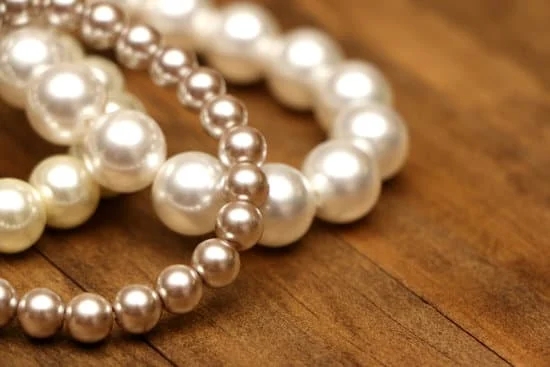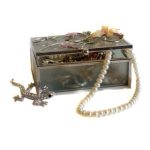Tribal beads jewelry has a rich history that spans across different indigenous communities and ancient times. The use of beads in jewelry-making holds significant cultural importance, symbolizing traditions, beliefs, and values unique to each tribal group. From protection charms to fertility symbols, these beads carry deep spiritual meanings that have been passed down through generations.
Various materials such as bone, wood, glass, and semi-precious stones are utilized in creating tribal beads, with each material reflecting the resources available in different regions. Different tribal groups employ unique techniques in crafting these beads, showcasing the intricate craftsmanship and artistry inherent in tribal jewelry traditions. The diversity in materials and techniques used highlights the richness of cultural heritage embedded in every bead.
Exploring the origins of tribal beads jewelry not only provides insight into the traditional crafting methods and designs specific to different communities but also sheds light on the global influence of these intricate adornments. Today, modern designers are incorporating tribal bead elements into their collections, blending traditional techniques with contemporary fashion trends. By embracing the beauty and symbolism of tribal beads jewelry, individuals can connect with diverse cultures while making a stylish statement that honors ancient traditions.
Different Types of Tribal Beads
Tribal beads jewelry showcases a rich tapestry of cultural diversity, with each piece telling a unique story of tradition and craftsmanship. One of the defining features of tribal beads jewelry is the wide array of materials used in their creation. From bone to wood, glass to semi-precious stones, these materials not only reflect the natural resources available to different indigenous communities but also carry symbolic meanings and spiritual significance.
Materiels Used in Tribal Beads
Bone beads are prevalent in many tribal bead jewelry pieces, symbolizing strength and resilience. The use of bone beads can be traced back to ancient times when animal bones were utilized for adornment and ceremonial purposes. Wood beads are another common material in tribal jewelry, often carved or painted with intricate designs that speak to the connection between nature and spirituality within indigenous cultures.
Glass beads have a long history in tribal adornments, with intricate patterns and vibrant colors that add a pop of visual interest to any jewelry piece. Semi-precious stones like turquoise, coral, or jade are highly prized for their beauty and believed metaphysical properties by various tribal groups. The techniques used in creating these beads vary from community to community, with some tribes specializing in intricate bead weaving while others excel at carving or shaping.
Unique Techniques Employed by Different Tribal Groups
Each tribal group has its distinctive methods for crafting beads that have been passed down through generations. For example, the Maasai tribe in Africa is renowned for their colorful beaded necklaces made using traditional beadwork techniques that involve intricate patterns and color combinations. In contrast, Native American tribes such as the Navajo are known for their use of turquoise and silver in creating stunning beadwork that reflects their spiritual beliefs and connection to nature.
Understanding the materials and techniques employed by different tribal groups not only deepens our appreciation for tribal beads jewelry but also allows us to celebrate the cultural heritage embedded within each exquisite piece. From the beautiful simplicity of bone beads to the dazzling brilliance of glass or semi-precious stones, tribal beads jewelry continues to captivate enthusiasts worldwide with its timeless beauty and profound significance.
Symbolism and Meaning
Tribal beads jewelry holds deep symbolic meanings that have been passed down through generations within indigenous communities worldwide. Many of these beads are not just decorative pieces but carry spiritual significance, protection charms, and fertility symbols that are believed to bring luck and ward off evil spirits. For example, in certain African tribes, beads made from specific materials are worn during rituals to invoke protection from ancestors or to celebrate important life events.
In Native American cultures, beadwork is a traditional art form that has been used for storytelling and as a means of communication. Each bead color and design has a specific meaning attached to it, reflecting the relationship of the wearer with nature, spirituality, or their tribal roots. For instance, turquoise beads are often incorporated into jewelry pieces as they symbolize protection and healing properties in many Native American tribes.
Moreover, in various Asian tribal communities like those found in Tibet or India, beads play a significant role in religious practices and ceremonies. Beads made from materials like bone or rudraksha seeds are considered sacred and are used for meditation purposes. The intricate designs and patterns on these beads represent prayers or mantras chanted by the wearer as they seek spiritual enlightenment or guidance.
| Types of Beads | Symbolic Meaning |
|---|---|
| Turquoise Beads | Protection and Healing Properties |
| Rudraksha Seed Beads | Sacredness and Meditation Purposes |
Cultural Traditions
Traditional Crafting Methods
Tribal beads jewelry has a rich history rooted in traditional crafting methods that have been passed down through generations within different tribal communities. Each tribe has its unique techniques for creating intricate beadwork, whether it involves weaving, stringing, or embroidery.
For example, the Maasai tribe in East Africa is known for their vibrant beadwork that is handcrafted by women using intricate beading stitches. On the other hand, the Native American tribes often use loom weaving to create symbolic patterns and designs in their beadwork.
Diverse Designs Across Different Tribes
The designs found in tribal beads jewelry vary significantly across different indigenous communities, reflecting their cultural traditions and beliefs. Some tribes incorporate animal motifs into their beadwork to symbolize strength or spiritual connection with nature, while others use geometric patterns to represent harmony and balance. In West Africa, the Yoruba people adorn themselves with beaded jewelry for ceremonial purposes, each color and pattern holding a specific meaning related to their rituals and festivals.
Ritualistic Importance
Tribal beads jewelry holds ritualistic importance within many indigenous communities, often used in ceremonies, celebrations, and rites of passage. For instance, among the Himba people of Namibia, specific types of beads are worn by women as a sign of marital status or social standing.
In South Asia, tribal beads are believed to ward off evil spirits and bring good luck to the wearer. Understanding the cultural significance behind these traditional practices adds depth and meaning to the artistry of tribal beads jewelry.
Contemporary Tribal Beads Jewelry
Contemporary designers are increasingly embracing the rich history and cultural significance of tribal beads jewelry, infusing traditional elements into modern collections. By incorporating tribal bead elements, these designers are not only paying homage to indigenous communities but also creating unique pieces that resonate with fashion-forward consumers.
One of the key trends in contemporary tribal beads jewelry is the fusion of traditional techniques with modern aesthetics. Designers are blending ancient beading methods with contemporary designs, resulting in striking pieces that bridge the gap between past and present. This combination of old and new creates jewelry that is not only visually captivating but also carries a deeper meaning rooted in cultural heritage.
In addition to honoring the craftsmanship of indigenous artisans, modern designers are also exploring sustainable practices in the production of tribal beads jewelry. By using ethically sourced materials and supporting fair trade initiatives, these designers are ensuring that their creations have a positive impact on both the environment and the communities involved in the production process. As consumers become more conscious of ethical considerations, the demand for sustainable tribal beads jewelry continues to grow.
| Contemporary Tribal Beads Jewelry Trends | Sustainable Tribal Beads Jewelry Practices |
|---|---|
| Fusion of traditional techniques with modern designs | Use of ethically sourced materials |
| Creating pieces that bridge past and present | Support for fair trade initiatives |
| Honoring cultural heritage through jewelry | Promoting positive impact on communities and environment |
How to Style Tribal Beads Jewelry
Tribal beads jewelry has a rich history and cultural significance that make it a unique and stylish addition to any outfit. Whether you’re looking to make a bold statement or add a touch of tribal charm to your everyday look, there are plenty of ways to style these beautiful pieces. Here are some tips and inspiration on how to incorporate tribal beads jewelry into your wardrobe:
- Statement Necklace: Make a statement with a chunky tribal bead necklace that features vibrant colors and intricate designs. Pair it with a simple top or dress to let the necklace be the focal point of your outfit.
- Stackable Bracelets: Create a bohemian look by layering multiple tribal bead bracelets on your wrist. Mix and match different colors, sizes, and textures for a fun and eclectic vibe.
- Dangle Earrings: Add some flair to your ears with dangling tribal bead earrings. Opt for pairs that feature unique patterns or symbols for an extra touch of personality.
These styling tips can help you create versatile looks that showcase the beauty and craftsmanship of tribal beads jewelry. Whether you’re dressing up for a special occasion or adding some flair to your everyday wardrobe, incorporating these unique pieces into your accessories collection is sure to turn heads.
Remember, tribal beads jewelry is not just about fashion – it’s also about honoring cultural traditions and supporting indigenous artisans. By wearing these pieces with pride and respect, you’re not only showcasing your personal style but also celebrating the rich heritage behind each bead. So go ahead, experiment with different styles and combinations, and let your tribal beads jewelry tell a story of tradition, craftsmanship, and beauty.
Collecting Tribal Beads
To begin your collection of tribal beads jewelry, it is essential to understand the significance of authenticity. Authentic tribal beads are typically handmade by skilled artisans within the indigenous communities themselves, using traditional techniques passed down through generations. When sourcing pieces for your collection, look for craftsmanship that reflects the unique cultural identity of the tribe it originates from.
Here are some practical tips on how to source authentic tribal beads jewelry:
- Attend local craft fairs and artisan markets where indigenous artists showcase their work.
- Connect with reputable dealers who specialize in tribal bead jewelry and have established relationships with artisan communities.
- Research the history and cultural background of different tribes to better understand the context of the beads you are collecting.
Another aspect to consider when collecting tribal beads jewelry is understanding the value of different beads. Some beads may hold more historical or cultural significance than others, influencing their rarity and desirability among collectors. Educate yourself on the characteristics of various types of tribal beads, such as materials used, craftsmanship techniques, and symbolic meanings associated with them.
By delving into the world of tribal beads jewelry collection with an informed perspective on authenticity and value, you can not only enrich your personal style but also contribute to the preservation of cultural heritage and support indigenous artisans in their craft. Each piece tells a story that transcends time and space, making your collection a treasure trove of diverse traditions and meaningful connections.
Sustainability and Ethical Considerations
In the world of tribal beads jewelry, sustainability and ethical considerations play a crucial role in preserving the cultural heritage and supporting indigenous communities. It is essential to address the importance of ethical sourcing and sustainable practices in the production of tribal beads jewelry. By exploring fair trade practices and actively supporting indigenous artisans, we can ensure that the traditions and craftsmanship behind these beautiful pieces are preserved for future generations.
When collecting tribal beads jewelry, it is important to prioritize purchasing from sources that guarantee fair wages and working conditions for the artisans involved in creating these intricate pieces. Supporting fair trade practices not only helps uplift indigenous communities economically but also ensures that their traditional crafting techniques and cultural heritage are respected and valued. By choosing ethically sourced tribal beads jewelry, collectors can contribute to the sustainability of these ancient traditions.
As we continue to celebrate the beauty and symbolism of tribal beads jewelry, it is equally important to consider the environmental impact of production processes. Sustainable practices such as using recycled materials, reducing waste, and supporting eco-friendly initiatives within the industry can help minimize the ecological footprint of tribal bead jewelry production.
By aligning our values with ethical sourcing and sustainability principles, we can appreciate these cultural treasures while contributing to a more responsible and conscious consumer culture. Support ethically made tribal beads jewelry – not just as accessories, but as symbols of respect for traditional craftsmanship and support for indigenous communities worldwide.
Frequently Asked Questions
Where Did the Indians Get Their Beads From?
Indians sourced their beads from a variety of materials such as glass, clay, metal, and natural stones. Historically, beads were traded through networks connecting various regions, allowing for exchange and adaptation of bead-making techniques.
What Are Tribal Beads Made Of?
Tribal beads are typically made from materials found in the local environment such as seeds, shells, bone, wood, and clay. These materials are often transformed into intricate designs and patterns that hold cultural and symbolic significance within the tribe’s traditions and ceremonies.
Why Do African Tribes Wear Beads?
African tribes wear beads for a multitude of reasons, including cultural identity, spiritual protection, status symbol, healing purposes, and decorative ornamentation. Beads are often used to convey messages about one’s social rank or marital status while also serving as a means of artistic expression and cultural preservation.

Welcome to my jewelry blog! My name is Sarah and I am the owner of this blog.
I love making jewelry and sharing my creations with others.
So whether you’re someone who loves wearing jewelry yourself or simply enjoys learning about it, be sure to check out my blog for insightful posts on everything related to this exciting topic!





